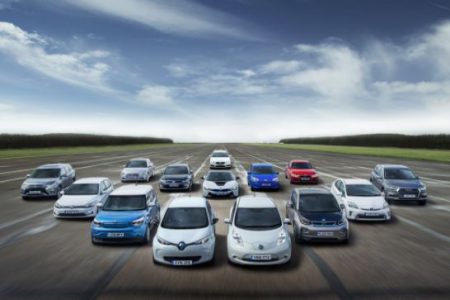The only thing sure about electric cars is they will eclipse the internal combustion engine—one day.
The timing, however, is the topic of fierce and wildly divergent speculation. At the moment, only one in 250 cars on the road is electric. Battery electric cars comprise 2.1% of new global auto sales (about 2 million passenger vehicles). Electric vehicle (EV) sales should hit 2.7 million in 2019 even as the broader auto market declines (paywall).
But guesses about the timing of gas guzzlers’ eclipse are all over the map. Quartz assembled several of the top projections to gauge the size of the discrepancy. Optimists such as Bloomberg New Energy Finance (BNEF) in its 2019 Electric Vehicle Outlook report see the total EV stock soaring to 548 million by 2040, or about 32% of the world’s passenger vehicles. Bears, such as ExxonMobil and the oil cartel OPEC, put that day far into the future. Exxon’s most recent predictions, the most pessimistic (or optimistic?), show the global stock of EVs reaching only 162 million by 2040. That’s 70% lower than BNEF’s base case.
How can these predictions be so divergent?
Two assumptions make all the difference in EV adoption models, says Colin McKerracher, head of advanced transport for BNEF. The first is price parity. EV’s sticker price is expected to exceed conventional cars’ until the mid-2020s. Right now, electric vehicles are more expensive than conventional counterparts thanks to their pricey batteries and relatively small EV manufacturing capacity. No one is sure how far battery costs, the biggest expense in making EVs, can fall (they’ve already dropped 85% since 2010), and when EVs will achieve the same economies of scale as combustion engines have secured over the past century. The price of oil changes the total cost of ownership as well (New York City says EVs’ lower fuel and maintenance costs already makes them the cheapest option for its fleet).
Read more: Quartz

